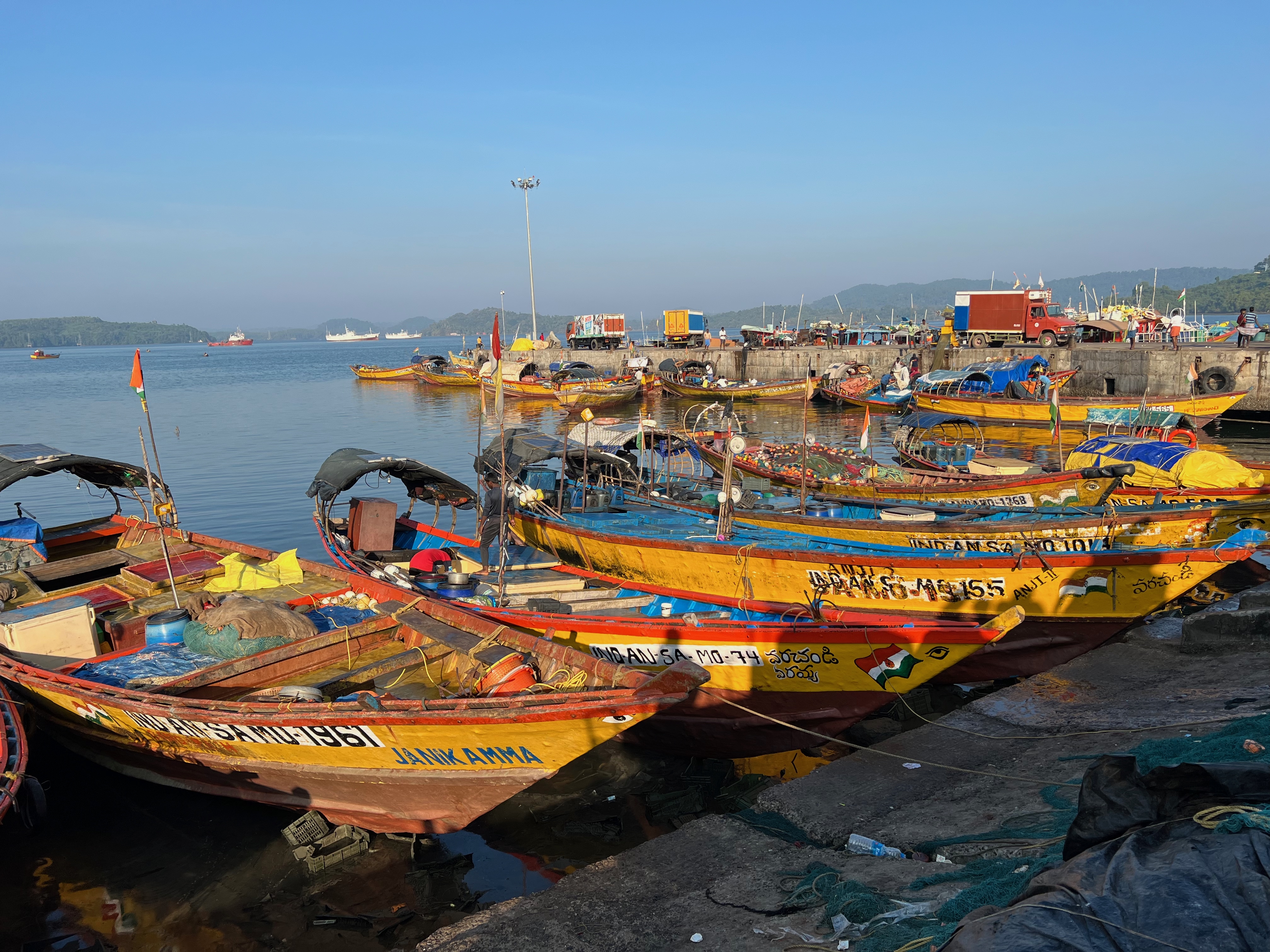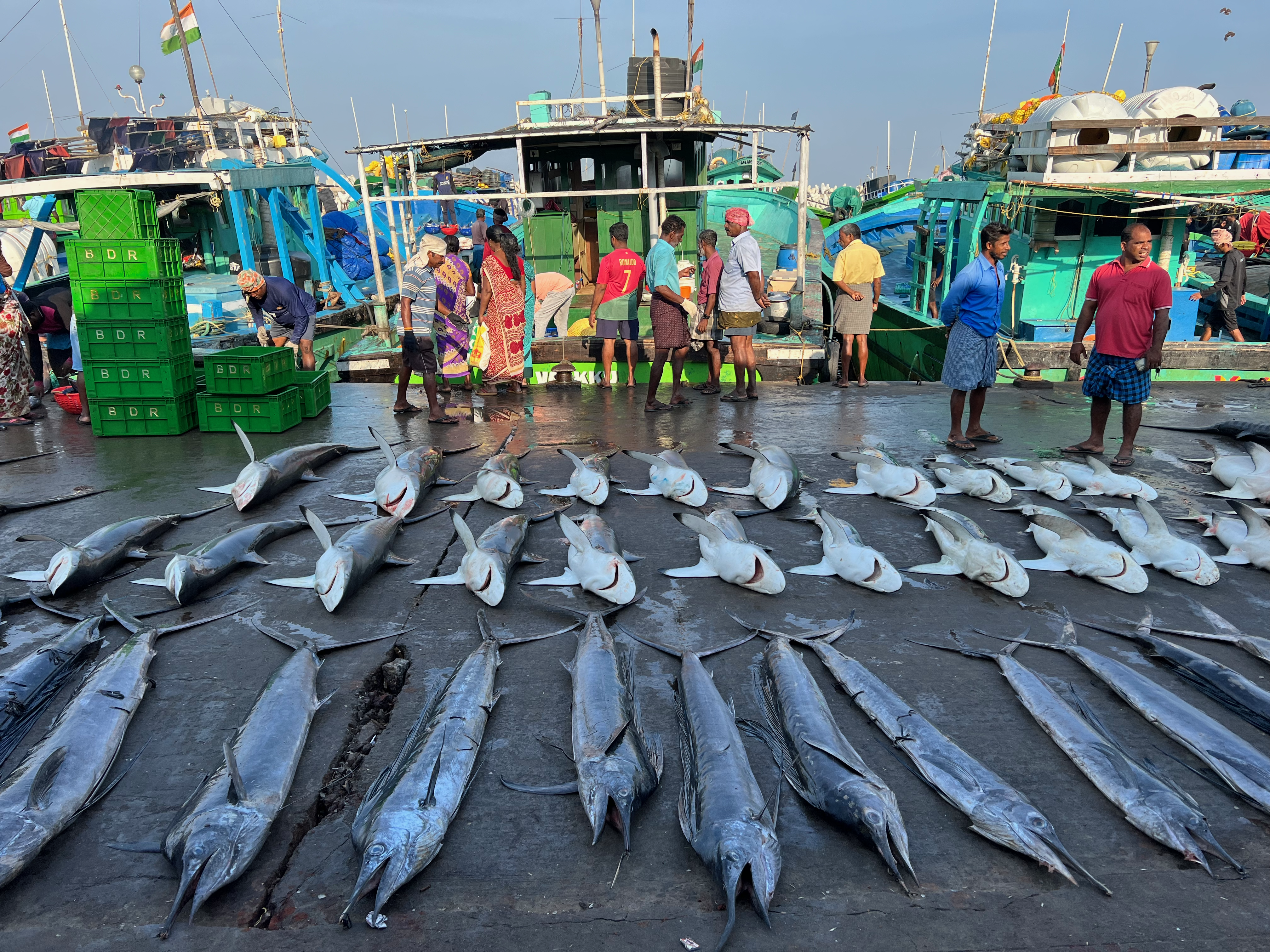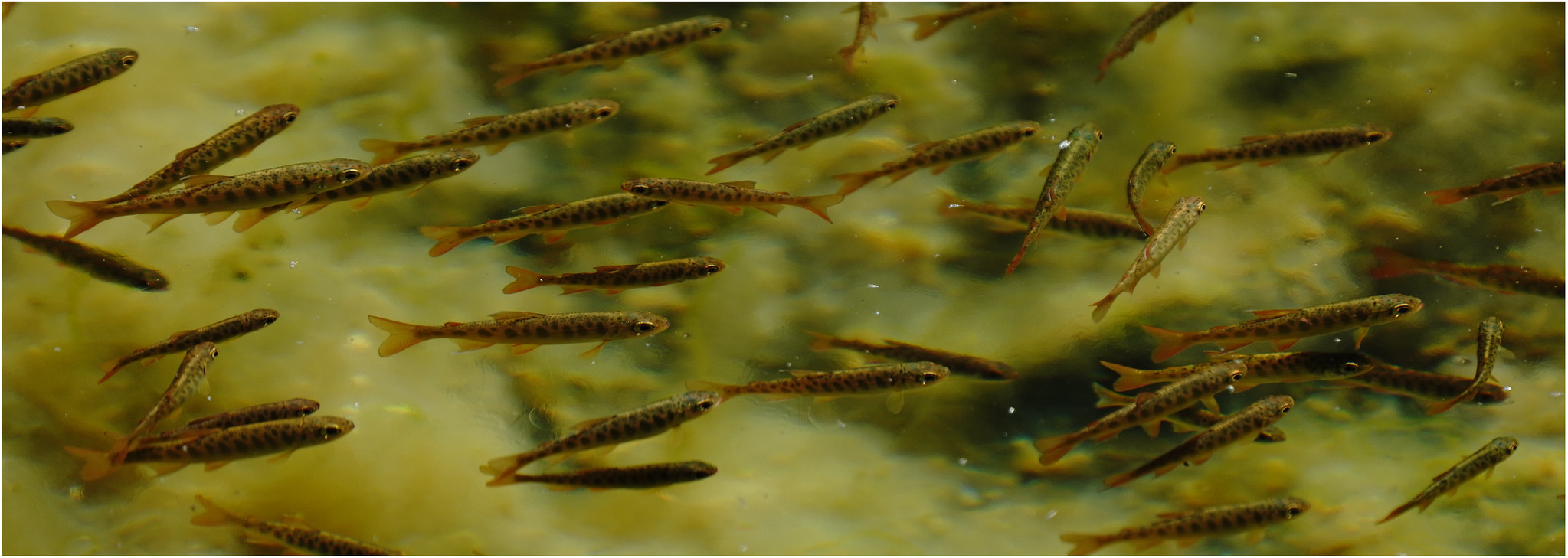Bon appetit! 2025 Morpho Working Groups address global fishing trade and fisheries nutrition

Baited Switch: Is global trade driving unsustainable fisheries?
Pick up a package of seafood in your grocery store and you may see a label that indicates the product was caught sustainably. The sustainable seafood industry is growing in wealthier countries like the US, which means these countries pledge to catch only a sustainable amount from their domestic waters. That’s good news for both fishers and fishes alike. However, some wealthier countries have such an appetite for seafood that they rely heavily upon seafood imported from countries that may not be sustainable. As a result, wealthy countries, which successfully maintain sustainable fisheries in their own backyard, may inadvertently help drive unsustainable exploitation elsewhere.
“The consumer doesn't have a lot of leverage to make the choices that would promote sustainable fisheries,” said Christopher Mull, a postdoctoral scholar at Dalhousie University. Seafood packages often lack labels that indicate the country of origin and the species can be mislabeled altogether.
Mull, who has spent several years studying the life history and the global trade of sharks and rays, will co-lead a new Morpho working group to investigate whether and how global trade impacts these fisheries.
Perhaps the seafood package you are considering in your local grocery store is not shark or ray meat. But many countries in Southern Asia and Central and South America rely on these species as a source of food and income. And while sharks and rays were historically only taken as incidental catch, that is starting to change.
“Sharks and rays are becoming more valuable,” Mull said. The global trade of shark and ray meat is estimated to be several billion dollars a year. However, trade of shark and ray meat is largely unregulated, even though some shark and ray species are listed as threatened by the Convention on International Trade in Endangered Species of Wild Fauna and Flora (CITES).

Economics isn’t the only reason to pay attention to sharks and rays. “Sharks and rays are the canary in the coalmine for fisheries,” said co-lead Nathan Pacoureau, a postdoctoral scholar at Fisheries and Oceans Canada. He explained that these species are intrinsically vulnerable to overexploitation because they tend to grow more slowly and have fewer offspring than do bony fishes, like tuna or cod.
Mull, Pacoureau and their colleagues, including Aaron MacNeil (Dalhousie University), Nicholas Dulvy (Simon Fraser University), and Holly Kindsvater (Virginia Tech), see three opportunities for change: First, to identify instances of trade driving population decline through unsustainable fishing. Second, to inform a more accurate list of species in need of CITES monitoring. . And third, to enhance existing trade regulations using the data products the working group will develop.
“Our focus is on not necessarily just the most important fishing and trading nations, but also those that have the lowest capacity for management that might be taken advantage of,” said Pacoureau. He and his colleagues hope to develop a framework for assessing shark and ray trade dynamics that could be adapted for any taxonomic group that may be facing similar pressures.
A Vanishing Vitamin: What causes a lack of thiamine (vitamin B1) in aquatic systems?

In 2020, a new concern emerged for Pacific salmon in the Western US that you might not have heard about. It’s called thiamine (vitamin B1) deficiency complex (TDC) and the victims were Chinook salmon in California’s Central Valley. Soon after, TDC was detected in several other species along the Pacific coast and as far north as Alaska’s Yukon River. While biologists have been aware of TDC in fishes and other wildlife species for nearly a century, there appears to be an increase in cases worldwide, from the Great Lakes of North America to the Baltic Sea.
All living things require thiamine for metabolism and as an antioxidant. Without it, creatures lose coordination and become lethargic. Thiamine naturally exists in soil and water, yet relatively few organisms can produce it. The rest of us, including people, fishes, and other wildlife, must obtain enough thiamine through our diets, or in shiny bottles of supplements at the drugstore. But until Walgreens opens aquatic locations and accepts payment with the tap of a fin, fish species lacking thiamine are in trouble.
Scientists have spent the last 90 years trying to find the root causes for TDC in aquatic systems, and still the issue remains a mystery. So far, resource managers can mitigate fishery losses by supplementing female fishes before spawning or using thiamine egg baths . However, the root of the problem may be much deeper - literally at the bottom of the ocean, where microbes make dissolved thiamine available to the rest of the food web. Recent studies show that in some cases thiamine in aquatic environments is so low that even some microbes struggle to survive. The Morpho Initiative and the USGS John Wesley Powell Center for Analysis and Synthesis are partnering to support a new working group to examine the problem from the micro- to the macro-level.
Working group leads Freya Rowland (US Geological Survey), Chris Suffridge (Oregon State University), and Jacques Rinchard (State University of New York) believe that a combination of anthropogenic and environmental factors may be changing the way thiamine moves through food webs. Prey fish production of thiaminase, an enzyme that inhibits thiamine uptake in predator fish species, may also explain the increase in TDC.
“Despite clear evidence of TDC amongst globally distributed populations of salmonids, there has been a history of resistance in both the Great Lakes and Baltic Sea fisheries to the idea that ecosystems may be failing to provide essential nutrients to animals,” noted the researchers. The ease of treating TDC by supplementing hatchery fish has limited understanding of why TDC is happening and the ultimate reasons for the apparent increase in species and ecosystems.
“The urgency of understanding TDC comes from two main issues: documentation of TDC in fishes and other wildlife is expanding, but we don’t yet understand why; and lack of understanding of the root cause(s),” they wrote.
The working group, comprised of leading TDC experts from microbiology to ocean fisheries disciplines, will create a model to represent the causal web leading to TDC and an interactive TDC database to help researchers and fisheries managers understand and treat TDC.
